By: Laura Rennick, Director of State, Federal, and International Affairs
Traveling anywhere after three years of barely leaving the house is a surreal experience. Senses that have been in hibernation these past years, are thrust into overdrive as I navigate all the travel scenarios that I used to know so well. Exchanging money makes my brain hurt as I try to convert Thai Baht to US Dollars at a rate of 32:1 and attempting to explain in sign language and over expressive eyes to a taxi driver that this is not in fact my hotel, all without cell service to translate or navigate…but these mild hurdles eventually break way to muscle memory that I do in fact remember how to do this. How to be immersed in the unfamiliar, to lean into the subtle discomforts and remembering to flow with people, situations, and life.
As so I flow. This exchange was already 10 years in the making when in 2019, I was asked to be a one-on-one professional host for the YSEALI Professional Fellows Program, sponsored by the U.S. Department of State and managed by the Mansfield Center at the University of Montana. Three years ago Mick Thongfa, a young professional from rural Thailand, traveled to Montana through YSEALI PFP as a Civic Engagement Fellow. Mick works as a grassroots organizer with local communities on environmental justice. He was focused on environmental protection of his home village, Klity Village in western Thailand, which was greatly impacted by a nearby mine. At the time, I was the Energy Bureau Chief at the Montana Department of Environmental Quality. As Mick’s professional host I was responsible for arranging meetings for him with relevant professionals and organizations in Montana; of which there are many. And while I aimed to help Mick learn from the long history of environmental protection and advocacy in the United States, I knew I had at least an equal amount that I could learn from him. With every conversation we had about our work, I became even more excited to visit him in Thailand, to see the issues and his work first hand, and learn the ways in which our work might be the same and still very different. After a significant amount of schedule wrangling we settled on a two week period in April 2020 for my outbound exchange to Thailand.
And then, the world stopped and all those lessons learned from so many beautiful experiences moving with travel were put to use in stillness at home, particularly breathing through discomfort and remembering to flow. What happens next is familiar to all of us: weeks give way to months and months to years. Ten years of anticipation slowly turned into thirteen, and so when the borders began to reopen and travel restrictions were lifted, we cautiously began to wrangle schedules again. And even with dates selected, approvals given, reservations made, I held my breath as I boarded that first of four flights that would take me to Chiang Mai in northern Thailand.

As a US participant in YSEALI PFP, the purpose of my outbound exchange is to learn and to share: to be a resource for others in a professional field similar to mine, and to learn from them, their work, their challenges, and their successes. Then bring these experiences home and weave them into my work. I, like so many, made a career change during the pandemic; I’m now the Director of State, Federal, and International Affairs for the Western Interstate Energy Board. Our work is to enhance the economy’s of the Western United States and Canadian Provinces and contribute to the well-being of the region’s people through collaborative development of energy policy. My work touches on everything from environmental quality, equity and justice in the energy transition, energy technology, land management, transboundary jurisdiction, and energy policy. Given this broad portfolio at home, the itinerary that Mick has planned for my 10-days is very exciting: meeting with local climate advocates, visiting a rural community that has been fighting the government to stay on the land they been on for hundreds of years, learning about sustainable agriculture and the connections to the forest with an indigenous leader, meeting with the community that inspired Mick’s career about the environmental damages from lead mining, failed reclamation attempts, how young people are behind the movement for environmental justice through community organizing, and meeting with the US Consul General for Chiang Mai and other alumni of US sponsored exchange programs.

Our first day is spent at Mick’s Earthright “office”. I use quotation marks for “office” because this place is special. It’s a spacious campus about 20 minutes north of downtown Chiang Mai. Settled amongst flower farms, it is lush and peaceful. It gives off the sense of an adult summer camp or retreat much more than an “office”. The tree lined driveway passes by a yard for activities, a pavilion for ceremonies, and a small stream and pond. The building itself is a beautiful structure made of wood and cement alternative (remember this is an organization focused on human rights and climate justice) and is LEED certified. It is two levels: small offices line the right wing on both floors, while the left is reserved for student housing rooms. The center has two levels of spacious open air shared space. There are a few tables and chairs, and students and staff mingle and work from various locations. There is a kitchen and dining area around back, and a team prepares breakfast and lunch daily. To quite literally top it off, there is a rooftop terrace surrounded by flowers; Mick tells me sometimes you come up here for fresh air and to think. This open air, naturally lit space is a beautiful space to remember how healing nature is. It’s easy to see how a space like this can inspire students to return to their homes energized for change and to create a better life for everyone.
Earthright is an international organization and this “office” reflects that; because the students are from all over the lower Mekong region, and staff hail from all of the world (the new regional director in Chiang Mai is from Kansas), English is the common language spoken at work. It never ceases to amaze me how accomplished the rest of the world is with linguistics; the people I meet throughout this trip generally speak a minimum of two languages, and frequently more than three; Mick speaks his Native language Karen, Thai, and English. The diversity of the languages of this “office” make the work accomplishments that much more impressive.

Throughout the day I chat with various staff and students. One woman from Vietnam has just completed a three-month community organizing training at Earthright. I speak with staff who focus on climate change, transboundary issues with hydroelectric development, coal fired power generation, and organizing the student groups. Everyone is excited to learn about me and my work, we exchange business cards and social media handles, eager to expand networks and make the world more accessible.
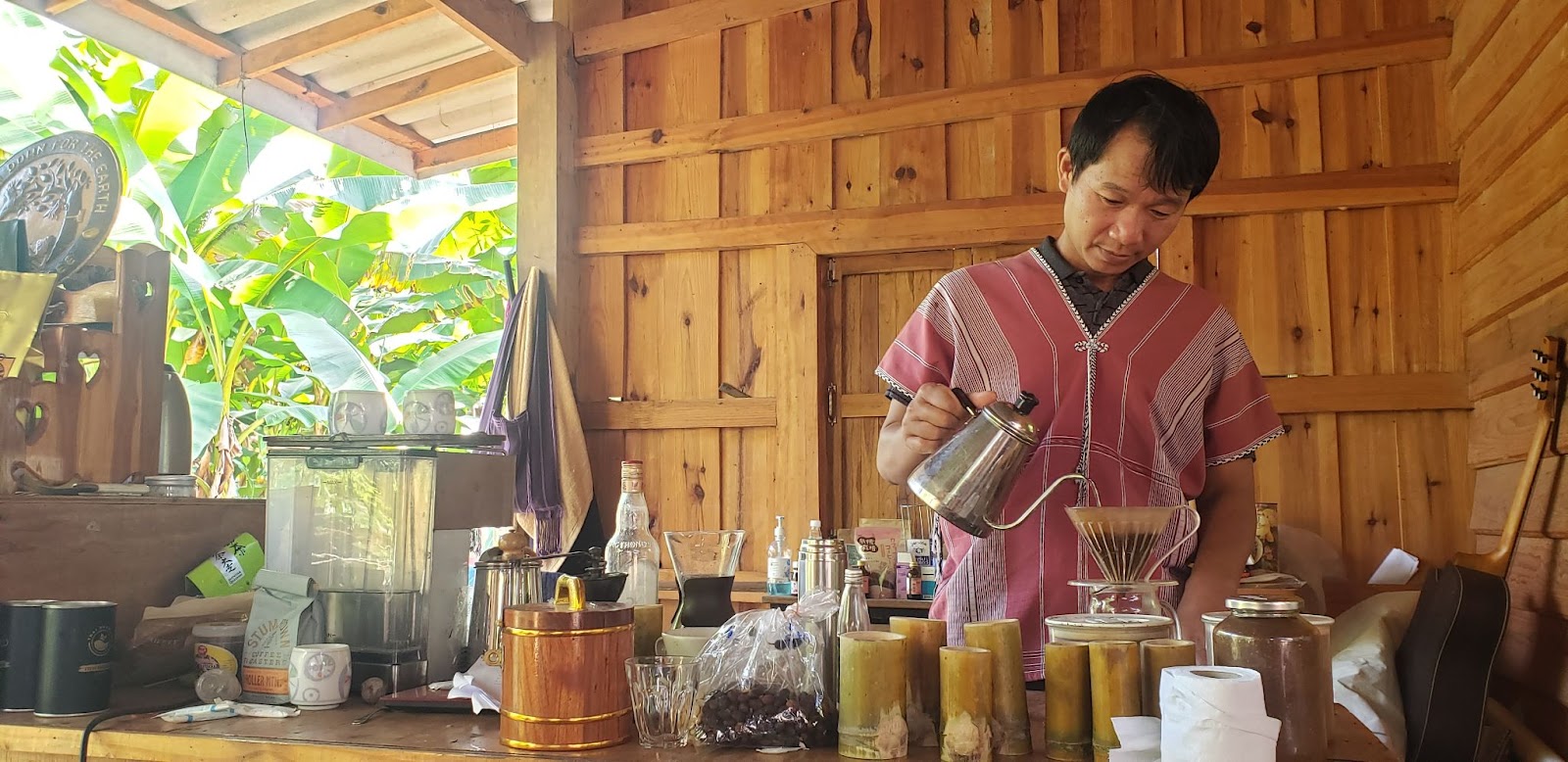
The next day we head out early for the mountains. Our objective today is the village of Ban Nong Tao where the community has been fighting with the government, who wants to create a national park in the area, to stay on the land and maintain their traditional rotational farming practices. We are scheduled to meet with a YSEALI PFP alum from Montana who goes by Oshi. I’ll learn later that Oshi is a bit of a local folk hero among the advocacy community in Chiang Mai. We find Oshi at his home in the village, which is also a local coffee house; this may be an exaggerated description but it is accurate: it is local, it is a house (Oshi’s house), and he sells pour over coffees as well as beans to go although to whom is unclear, you’d have to be about two hours off the beaten path to find this place. Over coffee, Oshi walks us through the history of his village, their agricultural practices, battles with the government to stay on the land (a victory they’ve just recently won), and connection to the forest. He’s a wealth of knowledge and very persuasive. Following lunch, he gives us a tour of his family’s garden; it looks more like an overgrown jungle but that’s intentional. He doesn’t believe in monocultures but favors intercropping, allowing the plants to grow and support one another. It seems to be working well, there’s coffee, mangos, bananas, root vegetables, avocados, beans, basil, jackfruit, cacao, star fruits, the list goes on. Then there’s the animals: chickens, ducks, pigs, and an apiarie which he’s particularly proud of having a home for the pollinators who treat his garden so well.
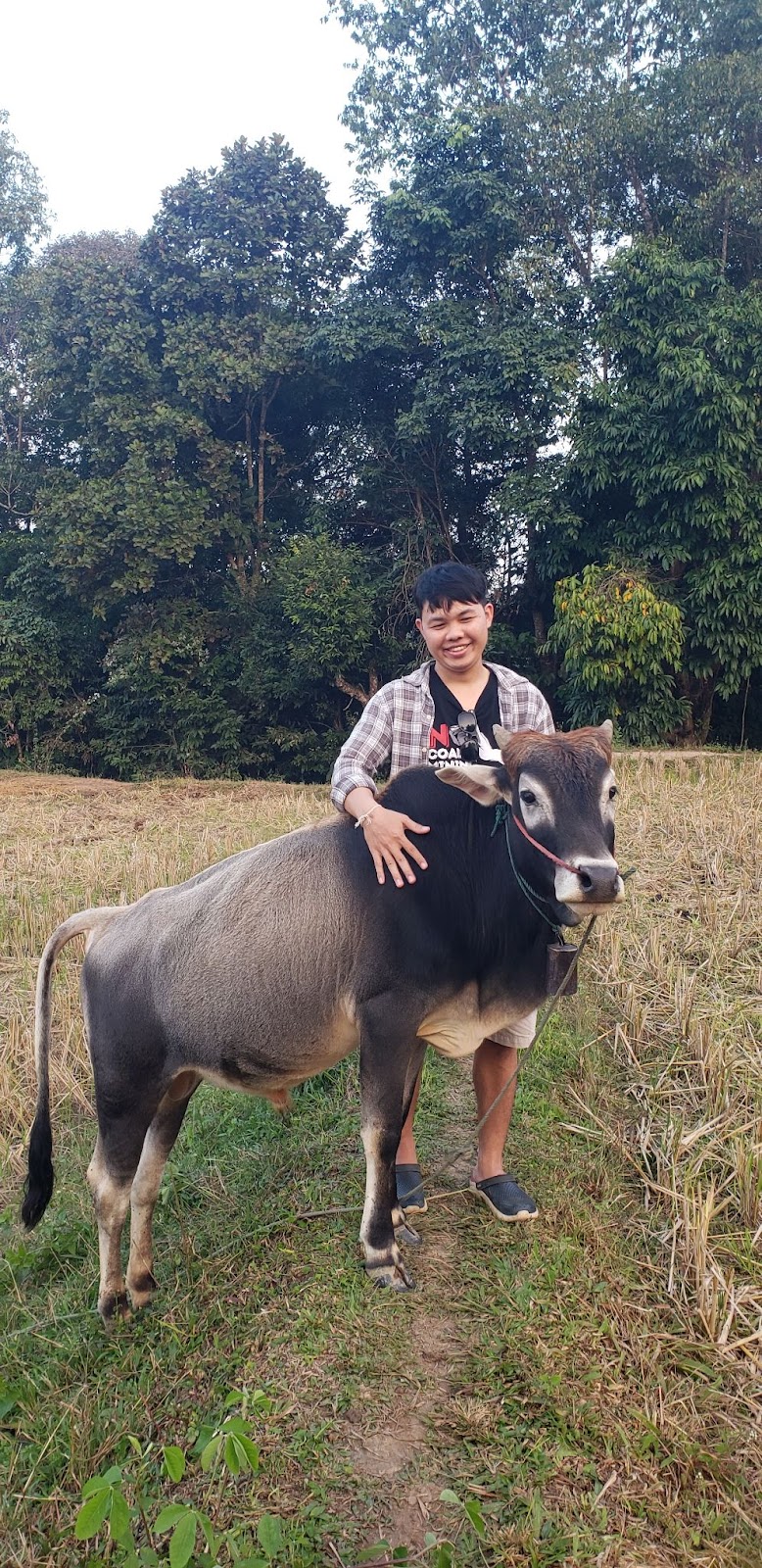
Later in the evening we tour the rice fields and visit with the lawn mowers (a handful of very friendly and talkative cattle). Perhaps my favorite story from our time with Oshi is that of the Lazy Man. This is the name of his coffee company and his philosophy. He reminds me with a description that nearly moves me to tears, that there’s no need to be productive all the time or to make everything perfect. That there is value in slowing down, in resting, and simply enjoying life. He tells us, we should all be lazy and slow down for the Earth.
It’s unclear what will happen with the government’s plans for a national park around Ban Nong Tao, but our next adventure is to visit Doi Inthanon National Park where the communities on that land were allowed to stay on the land even with the development of the park. The area is beautiful, it does give the impression of a stretch of land that receives more attention and care from the government. As we ascend to the highest point in Thailand, we pass many villages. These people, like Oshi’s community, are Karen S’gaw and indigenous, ethnic minority in Thailand. They still practice agriculture within the park, as well as selling local goods, and some also serve as guides which are required for any hikes within the park. It is beautiful to see the community living in harmony with the park; but also a sad reminder of all the Native people forcibly removed from their homelands in America to establish our own National Parks.

Our final excursion in Chiang Mai is a meeting of alumni from US State Department exchange programs hosted by the new US Consular General to Chiang Mai. Ms. Lisa Buzenas came to the Consulate in August of this year so this gathering is one of many in her new post as the senior US diplomat in the region. There are multiple YSEALI alumni in attendance including some that spent their exchanges in Montana. This is an amazing gathering of professionals all working in various advocacy fields, everything from climate change and environmental justice, to human trafficking, LGBTQI issues, and carbon banking. It’s a wonderful opportunity to connect and meeting the new Consular General is certainly a privilege.
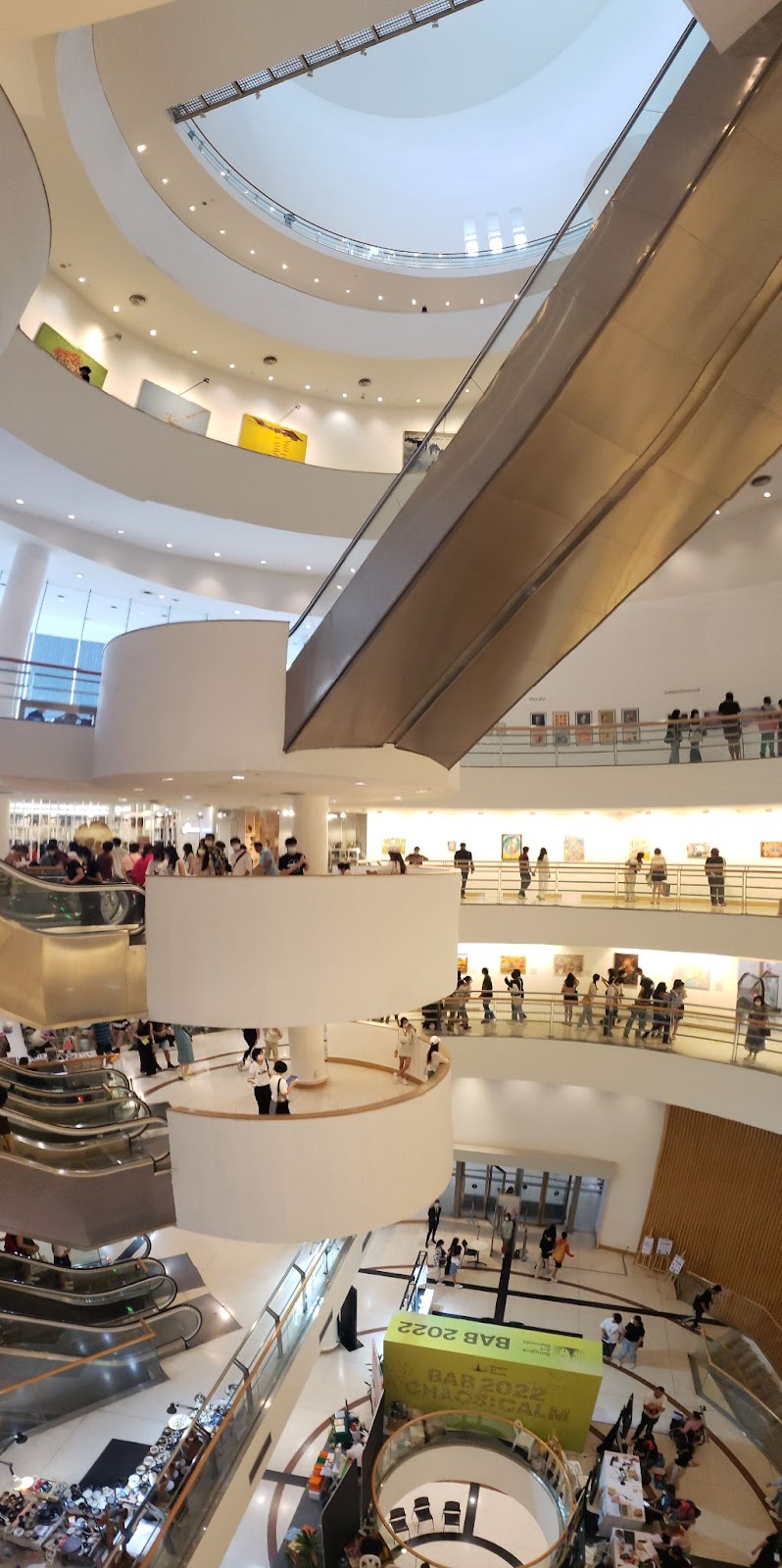

With the first week coming to a close our weekend is spent traveling to Bangkok which is the jumping off point for the second half of our exchange. We spend the weekend with another YSEALI PFP alumna from Montana, Isa, who is very much in the know and shows us a beautiful side of Bangkok including the arts and cultural center where Mick has recently organized a large event to showcase the local communities fighting for environmental justice. Isa does communications for Greenpeace Thailand and her current portfolio includes ocean issues, plastics, climate change, and energy. She has a great energy and is fun to engage with. We chat about politics in Thailand, the recent change of government for the Bangkok province seems to be revitalizing the city with new energy and opportunities for people to learn and engage with one another beyond shopping (a favorite pastime). We visit Bangkok must-sees, admire architecture, detailed mosaics, would-be influencers getting the perfect shot at temples, and eat all the things. I point at everything and ask what it is, why it is that way, and what do Thai people think or do about this or that. We talk about the generational changes happening in Thailand and the United States, and about nationalism and globalism, and we agree that they are not mutually exclusive. It’s a fascinating weekend and Isa and Mick are the most gracious and hospitable guides.
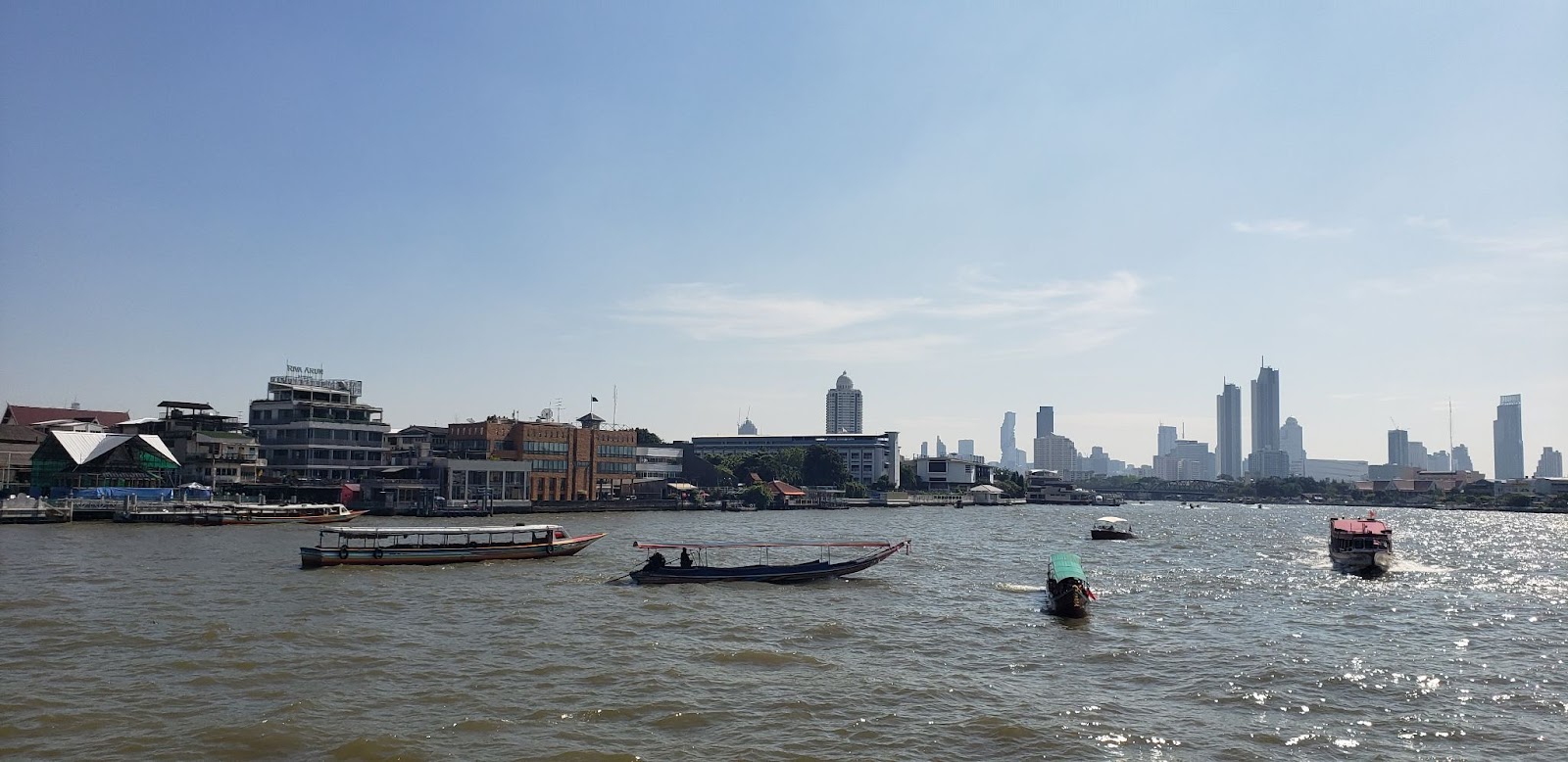
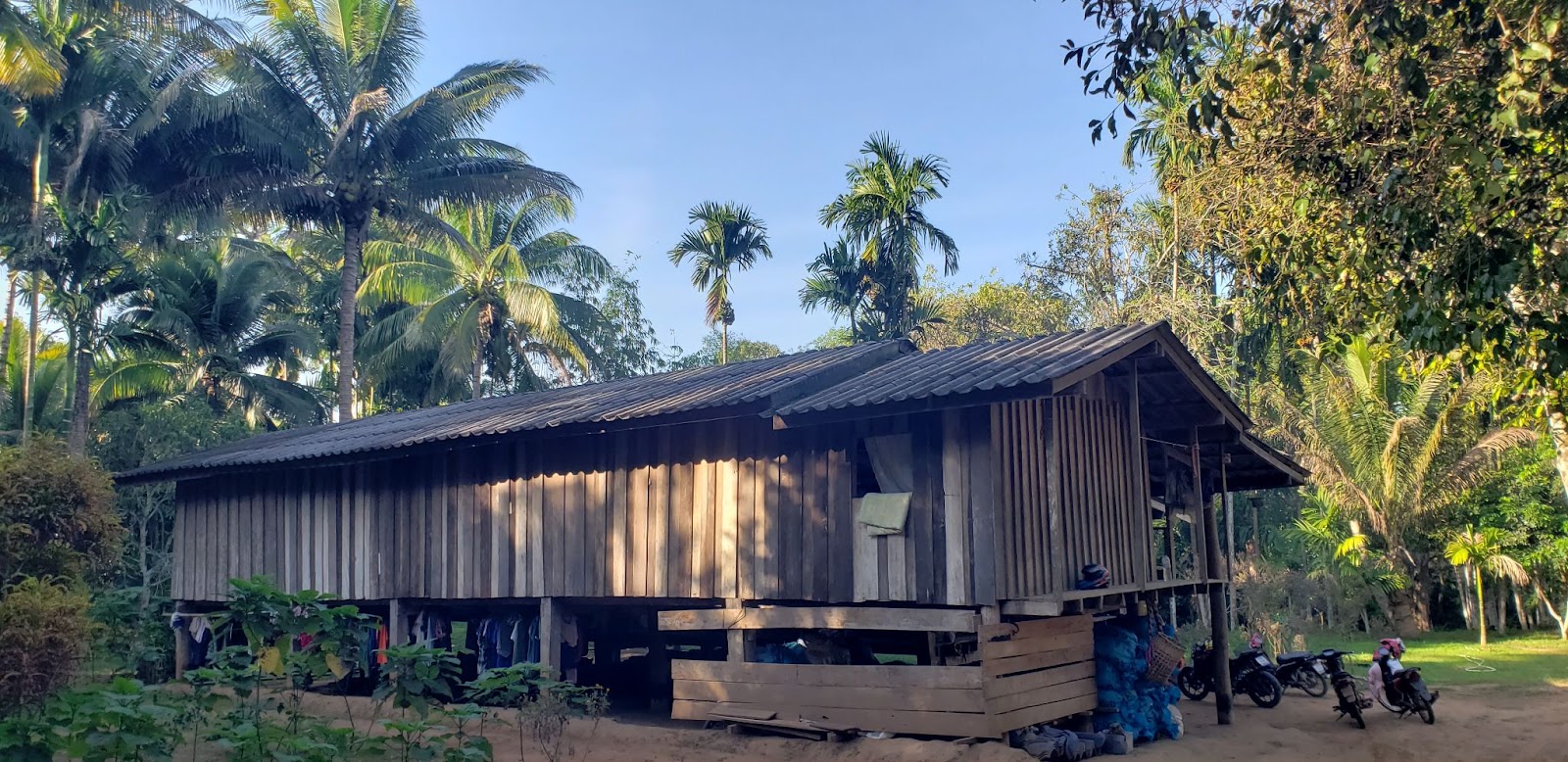
On Monday, we start early for an all day drive to the remote Klity Village. It takes about an hour before the Bangkok skyline is definitively behind us. We stop for lunch at the River Kwae and talk about world war two and refugees. The sun starts to get low on the horizon as the road turns to dirt and we slow to a backroad pace. Mick makes sure I’m okay, and I reassure him that this type of driving is much more normal for me than the past few days in Bangkok. Eventually we reach his village as the sun sets.
This community is incredibly remote. There is no electricity, no sanitation services, no market…many of the homes don’t even have four walls. The houses are platform structures, all elevated off the ground, there’s no plumbing, and no heat or air conditioning. This community is living off the land around them, everything they eat comes from the gardens and farms surrounding the homes and community, the water for everything comes from the creek.

The creek is why we are here. Fifty years ago a lead mine was developed about 12 kilometers from the village. We meet with the local community leader and his daughter Pnam, who has returned to Klity Village after receiving a graduate degree from Chiang Mai University. They tell me, at the time the mine opened, there was no road to the village, there were no dirtbikes, no trucks. It took hours to drive the tractor 12 kilometers from the village to the mine site. So when the creek changed color, smelled putrid, and became sick, it wasn’t initially clear what the issue was. The community also lacked the resources to push back against a massive mining corporation. A fortuitous meeting with an attorney on a backpacking trip to the national park (Klity Village is also in a national park), finally gave the community a voice of power. They brought news media to the village and put a spotlight on the environmental devastation the mine was taking on the local community. Pnam’s father tells us, these were dangerous times, he and the others leading the effort for justice received multiple death threats; but they pushed on (Mick clarifies that no one was killed and we all exhale gratitude for that).
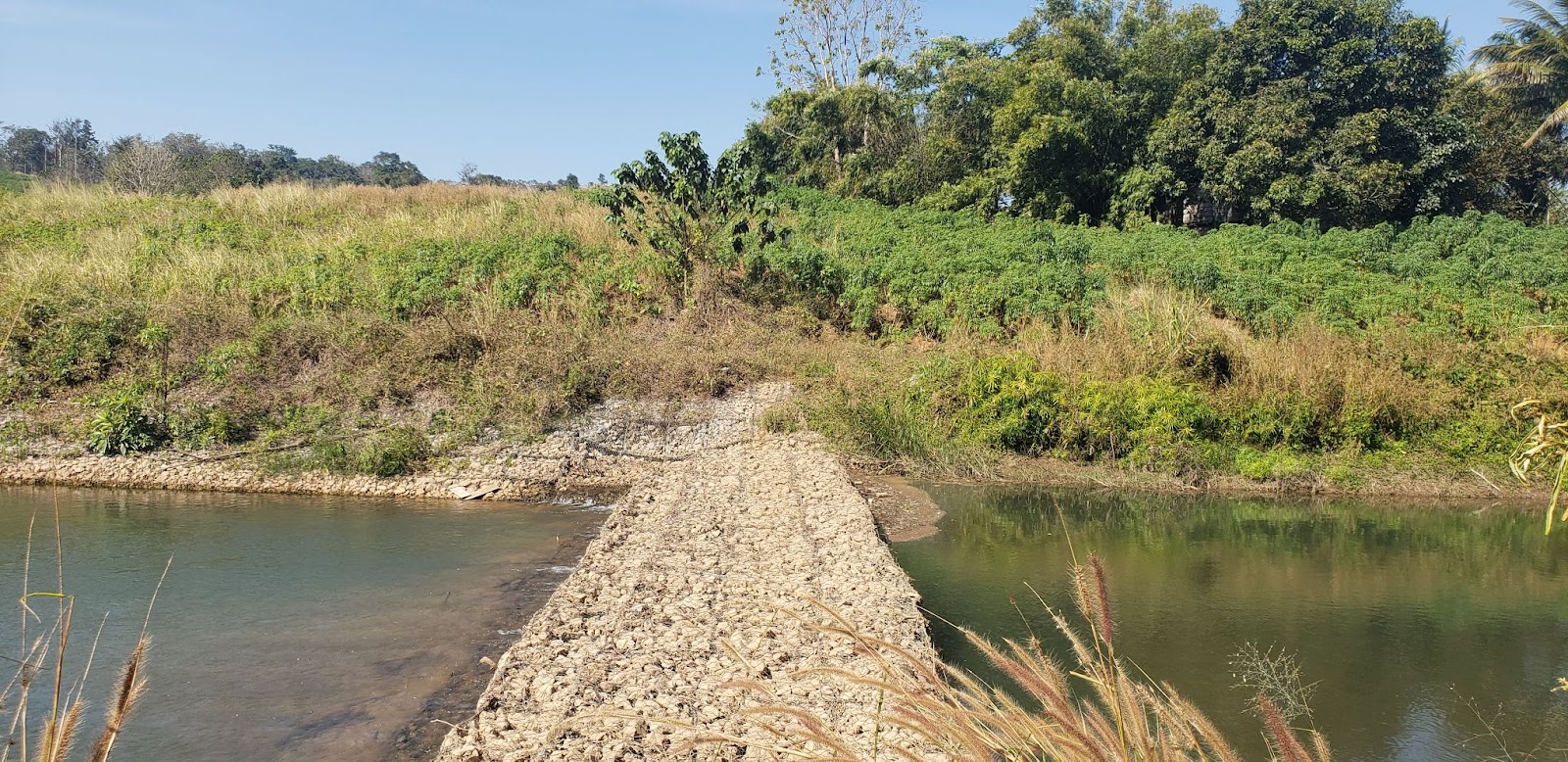
The mine eventually closed about twenty years ago, but the damage to the creek remains. The community has won multiple lawsuits against the mining company, but only received a small amount of compensation. The government installed a rudimentary weir to deal with the lead in the creek, but that washed out. A new weir was installed last year further up stream. Mick and Pnam take me to see the weir: it’s a relatively simple structure made of gabion walls in at least two visible levels. It appears to be designed to slow the water so that the contaminated sediments can settle out and the water can pass through. The mood changes from casual to concerned, as Pnam and Mick ask me if I think this will fix the stream. It’s a complex question. I tell them it’s probably a decent first step as long as it’s inspected regularly and the settled sediments are removed to an off-site impervious repository. I emphasize that testing, long term, independent testing, is necessary to really know if it’s working and continues to work into the future. That’s a problem they tell me because there is no money for independent testing, and the company won’t give them results of tests in writing as they are still in active litigation. The government monitored the stream for a while, but has since stopped with no known plans to resume.
And this is where I feel the benefit of my exchange truly lies. To be able to come home, having seen the issues first hand, having met the community leaders of today and tomorrow, to try to make connections and find resources that might help them have true and trusted restoration of the creek that their entire lives, and the lives of everyone in their community, rely on. It’s a big task, and I can already feel the weight of it as Pnam, Mick, and I talk about her dreams for the community. In addition to the fight for environmental justice, she’s also seeking to develop a community center. She wants the children of the community to know they can be more than a teacher, farmer, or go into the military. She wants to educate them as to the broader world, so that they can decide if they want to live close to the land and in service to the community in the community like her, or if they want to take what they have learned from growing up here and help other communities as Mick is doing.
Pnam’s father tells us he thinks it’s good that I’m here. The world is a more connected place now than when he was young and he thinks that is good. I agree with him with my whole heart, we’re not so different from one another and we learn that best when we spend time together in person and in our communities.
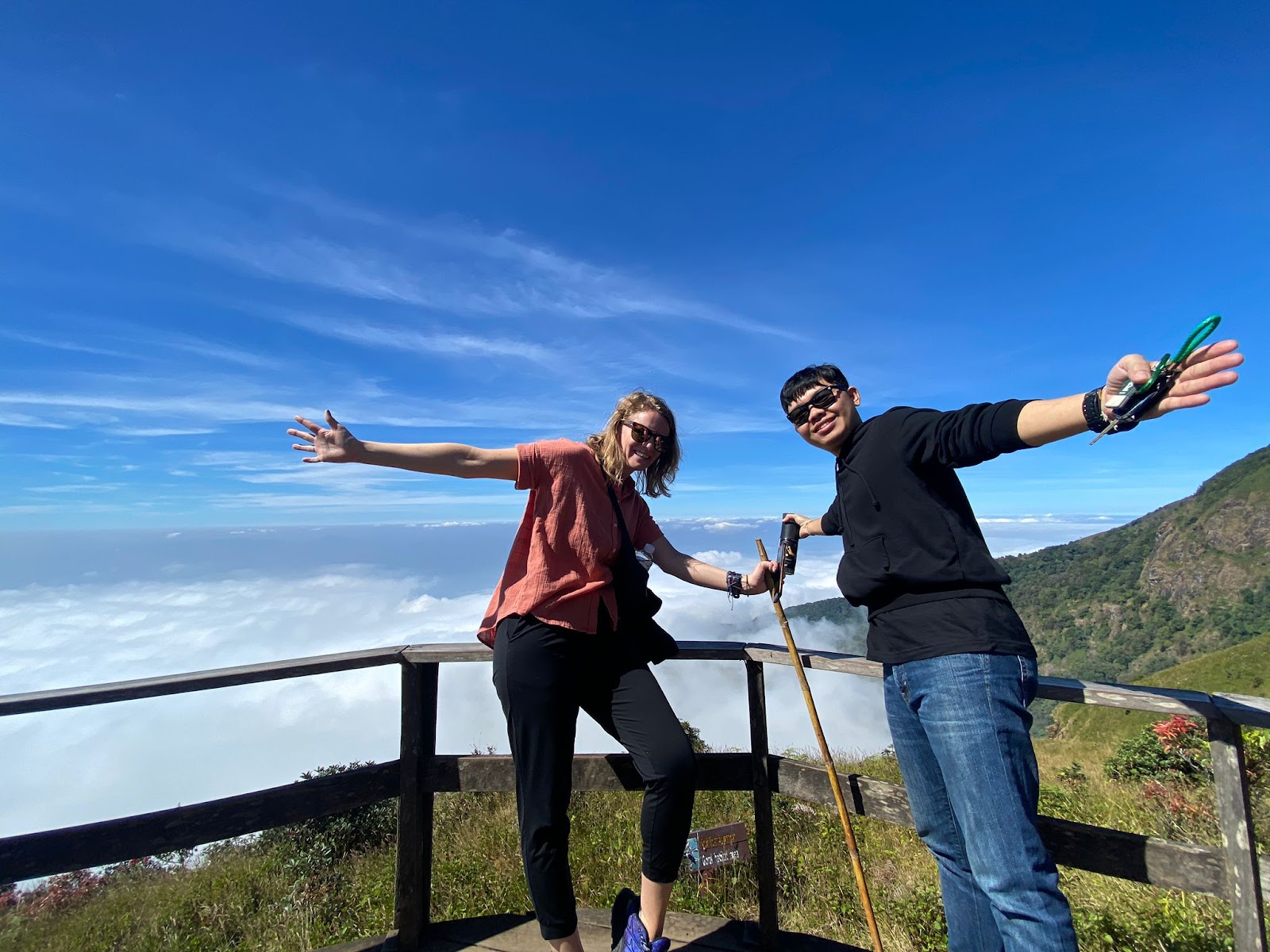
If you would like to get involved with Klity Village or have suggestions for their efforts to restore and monitor Klity Creek, please email Laura Rennick at lrennick406@gmail.com














































 1500 W. Broadway, Suite A | 406-543-4770 |
1500 W. Broadway, Suite A | 406-543-4770 | 
